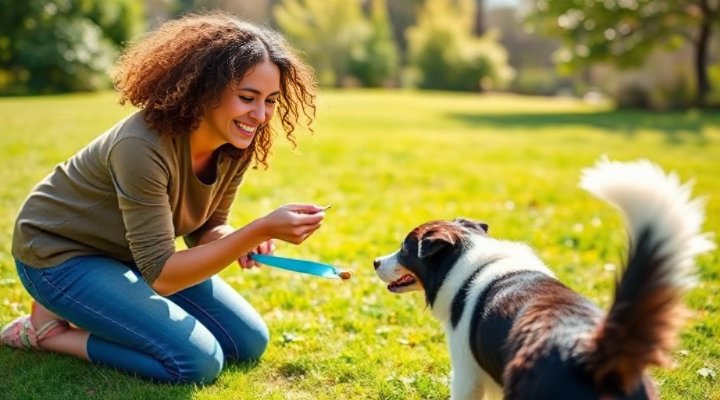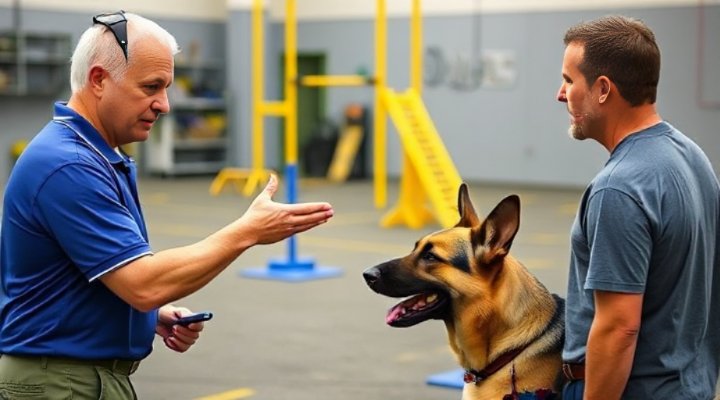Training your canine companion is one of the most rewarding experiences a pet owner can have. Not only does it strengthen your bond, but it also ensures your dog becomes a well-mannered member of society. Whether you’re starting with a new puppy or working with an older dog, these dog training tips will set you both up for success.

Basic Obedience: Foundation of All Dog Training
Every dog should master basic commands like ‘sit’, ‘stay’, ‘come’, and ‘down’. These aren’t just party tricks – they’re essential for your dog’s safety and your peace of mind. Start with short, 5-10 minute sessions several times a day, gradually increasing duration as your dog’s attention span improves.
For example, when teaching ‘sit’, hold a treat near your dog’s nose, then slowly move it up and back over their head. As their nose follows the treat, their bottom will naturally lower. The moment they sit, say ‘yes!’ or click (if using a clicker) and give the treat. Repeat this process, adding the verbal cue ‘sit’ just before they perform the action.
If you’re struggling with basic commands, consider checking out our guide on puppy training basics for more detailed instructions.

The Power of Positive Reinforcement
Modern dog training has moved away from punishment-based methods toward positive reinforcement. This means rewarding behaviors you want to see more of, rather than punishing unwanted behaviors. Studies from the American Veterinary Society of Animal Behavior show this approach is not only more humane but also more effective long-term.
Keep training sessions upbeat and end on a positive note. If you or your dog get frustrated, take a break and try again later. Remember, dogs learn best when they’re having fun! Small, soft treats work well for rewards, but praise and petting can be equally effective for some dogs.
Timing is Everything
To make positive reinforcement work, you must reward the desired behavior within 1-2 seconds. This immediate feedback helps your dog understand exactly what earned them the treat. For instance, if you’re teaching ‘down’, the reward should come the moment their elbows touch the ground, not when they stand back up.

Crate Training: Creating a Safe Space
When done correctly, crate training provides dogs with a den-like sanctuary where they can relax. The key is to make the crate inviting with comfortable bedding and special toys. Never use the crate as punishment – it should always be associated with positive experiences.
Start by feeding meals near the crate, then gradually move the bowl inside. For more detailed guidance, our article on crate training puppies walks you through the process step-by-step.
Common Crate Training Mistakes
Avoid leaving your dog crated too long (no more than 3-4 hours for adults, less for puppies). Also, resist letting them out when they whine – this teaches them that whining opens doors. Instead, wait for a moment of quiet before opening the crate.

Leash Training: Walking in Harmony
Does your dog pull like a sled dog during walks? You’re not alone. Leash manners are one of the most common challenges dog owners face. The secret is to stop moving forward when your dog pulls, only proceeding when the leash is loose. This teaches them that pulling gets them nowhere.
For dogs with extreme pulling issues, consider a front-clip harness that gently turns them sideways when they pull. Our leash training guide offers additional solutions for persistent pullers.
Heel Command Basics
To teach ‘heel’, start with your dog on your left side. Hold a treat at your left thigh and take a step forward. If your dog stays beside you, reward immediately. Gradually increase steps between rewards. Practice in low-distraction environments before testing skills in busier areas.

Addressing Behavioral Issues
From excessive barking to separation anxiety, behavior problems can strain the human-canine bond. The key is identifying the root cause rather than just treating symptoms. For instance, a dog that chews furniture when left alone might be bored or anxious rather than ‘naughty’.
For comprehensive solutions to common issues, the ASPCA’s behavior resources offer science-based advice. Additionally, our article on dog behavior modification provides practical strategies.
When to Seek Professional Help
If you’re dealing with aggression, extreme fear, or other serious issues, don’t hesitate to consult a certified professional. Look for trainers with credentials from organizations like the Certification Council for Professional Dog Trainers (CCPDT). Our guide on finding the right trainer can help you make an informed choice.
Remember, every dog learns at their own pace. Celebrate small victories and be patient with setbacks. With consistency and these dog training tips, you’ll be amazed at what you and your canine companion can achieve together!
Related Keywords: puppy training tips, positive reinforcement dog training, crate training guide, leash training techniques, dog behavior solutions, obedience training methods, professional dog training

